If you're a fan of sausages, then you're in for a treat! German sausages are renowned for their delicious flavours and high-quality ingredients, making them a popular food enjoyed all around the world. From the famous Bratwurst to the lesser-known Teewurst, German sausages come in a variety of shapes, sizes, and flavours, each with its unique taste and texture.
In this article, we will take you on a journey through the different types of German sausages, giving you a glimpse into the rich and diverse culinary culture of Germany. We will explore the most popular German sausages, their origin, and how to enjoy them. By the end of this article, you will have a better understanding of the various types of German sausages available, and you might even discover a new favourite!
So, if you're ready to tantalise your taste buds with the rich flavours of German sausages, then read on!
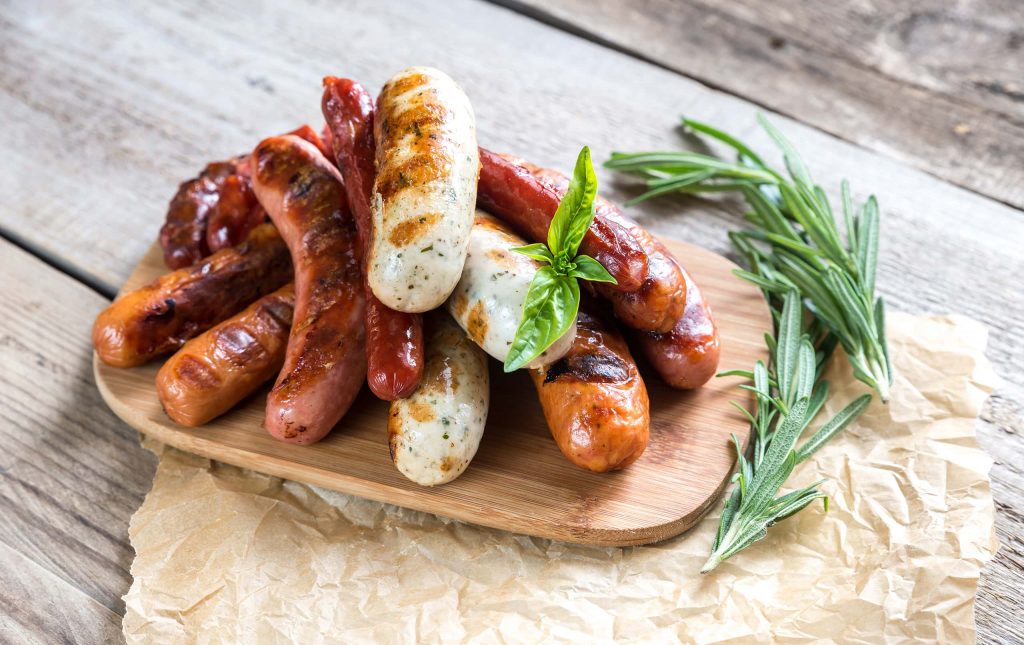
German sausages are renowned around the world for their delicious flavours and high-quality ingredients. With so many varieties to choose from, it can be challenging to know where to start. In this article, we will explore some of the most popular German sausages, each with its unique texture and taste. By the end of this article, you will have a better understanding of the various types of German sausages available and how to enjoy them.
It's worth noting that the nutritional values below are based on a serving size of approximately 100g. The nutritional values may vary depending on the brand and preparation of the sausage. However, in general, German sausages tend to be high in fat and sodium, so they should be consumed in moderation as part of a balanced diet.

One of the most famous German sausages is Bratwurst, made from pork and known for its rich flavour and firm texture. Bratwursts are typically grilled or pan-fried and served with mustard, sauerkraut, or onions. They are also a common addition to hot dogs and can be enjoyed in a bun with various toppings.
When cooked, they have a crisp outer layer and a juicy, flavourful interior. Bratwursts are often grilled or pan-fried and served with mustard, sauerkraut, or onions.
Did you know that the first recorded mention of Bratwurst dates back to the 14th century? It was originally made in the city of Nuremberg and quickly gained popularity throughout Germany. Today, it is one of the most well-known and beloved types of German sausage.
Bratwursts are a firm-textured sausage made from pork and known for their rich, savoury flavour. When cooked, they have a crisp outer layer and a juicy, flavourful interior. Bratwursts are often grilled or pan-fried and served with mustard, sauerkraut, or onions.
More on the Bratwurst sausage here.
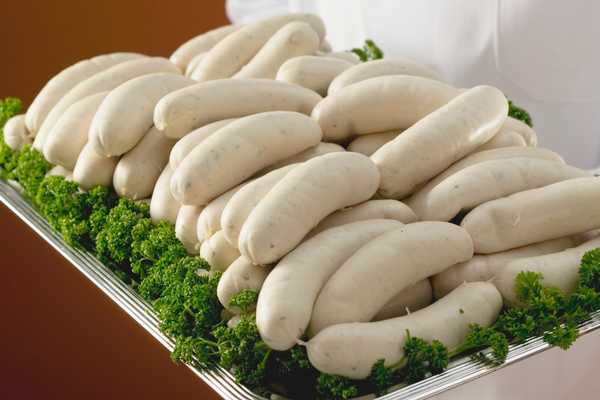
Weisswurst, also known as white sausage, is a traditional Bavarian sausage made from veal and pork. The sausage has a pale white colour and a mild, slightly sweet flavour. Weisswurst is often boiled and served with sweet mustard and a soft pretzel. It is a popular breakfast food and is traditionally eaten before noon.
Legend has it that Weisswurst was created in Munich in 1857 by a local innkeeper who ran out of pork while making sausages. He decided to use veal instead and added a variety of seasonings to create a new type of sausage. The result was the Weisswurst, which quickly became a hit in Munich and beyond.
Weisswurst is a pale, white sausage made from veal and pork. It has a mild, slightly sweet flavour and a delicate texture. Weisswurst is traditionally boiled and served with sweet mustard and a soft pretzel. It is a popular breakfast food in Germany and is typically eaten before noon.
More on the weisswurst sausage here.

Knackwurst is a smoked sausage made from beef and pork. It has a distinct snap when bitten into, hence the name "knack" which means "crack" in German. The sausage is often grilled or boiled and served with sauerkraut or mashed potatoes. It is a popular sausage in Germany and can be found in many different regions.
The Knackwurst originated in northern Germany and was traditionally made with a mixture of pork and veal. Over time, beef was added to the mix, and the sausage became more popular in other parts of Germany as well.
Knackwurst is a smoked sausage made from beef and pork. It has a distinct snap when bitten into, hence the name "knack" which means "crack" in German. The sausage has a bold, smoky flavour and a meaty texture. Knackwurst is often grilled or boiled and served with sauerkraut or mashed potatoes.
More on the knackwurst sausage here.
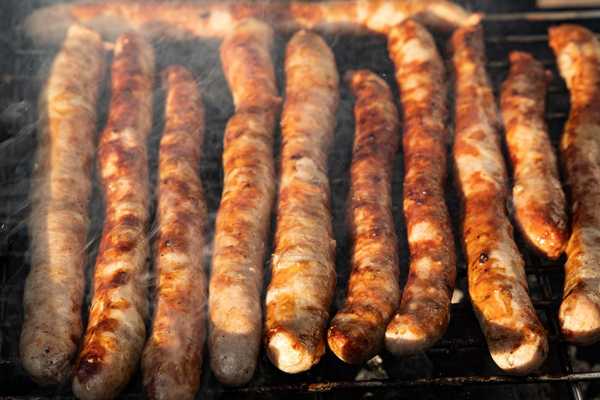
The Thuringian sausage is a traditional German sausage made from pork. It is named after the Thuringia region in central Germany, where it originated. The sausage has a distinct, coarse texture and a strong, smoky flavour. Thuringian sausages are typically grilled or fried and served with mustard and bread.
The Thuringian sausage is one of the oldest types of German sausage, with a history dating back over 600 years. It is named after the region of Thuringia in central Germany, where it originated. Today, it is still a popular food in Thuringia and beyond.
The Thuringian sausage is a coarse-textured, smoked sausage made from pork. It has a strong, smoky flavour with hints of garlic and pepper. Thuringian sausages are typically grilled or fried and served with mustard and bread.
More on the Thuringian sausage here.
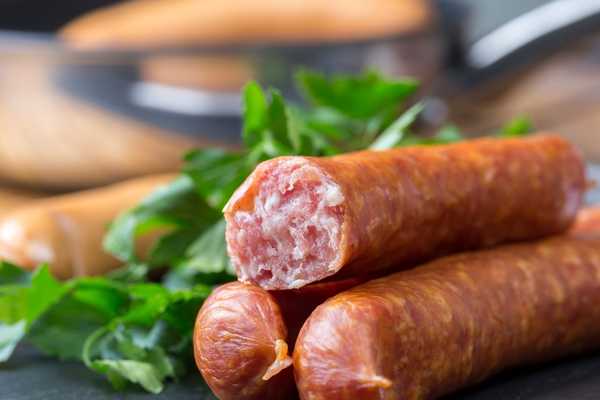
Mettwurst is a raw sausage made from beef and pork. It has a smooth texture and is often eaten as a spread on bread or crackers. The sausage is seasoned with salt, pepper, and spices, giving it a rich, savoury flavour. It is commonly found in northern Germany and is often served with pickles or onions.
While Mettwurst is a tasty treat, it's important to note that it's a raw sausage and should be handled with care to prevent any risk of foodborne illness. It's always recommended to consume Mettwurst from a reputable source and to cook it thoroughly before eating.
More on the mettwurst sausage here.
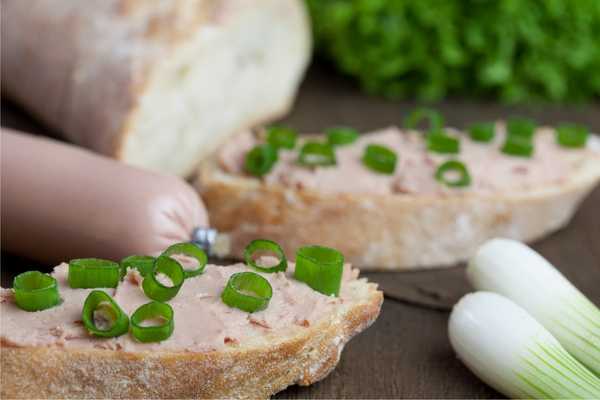
Leberwurst, also known as liverwurst, is a spreadable sausage made from pork liver and fat. It has a smooth, creamy texture and a rich, savoury flavour. The sausage is often served on bread or crackers as a snack or appetizer. It is a popular sausage in Germany and is commonly found in delis and supermarkets.
Despite its name, Leberwurst actually contains more pork fat than liver. It's high in calories and fat, so it's best enjoyed in moderation as part of a balanced diet.
More about the Leberwurst German sausage here.
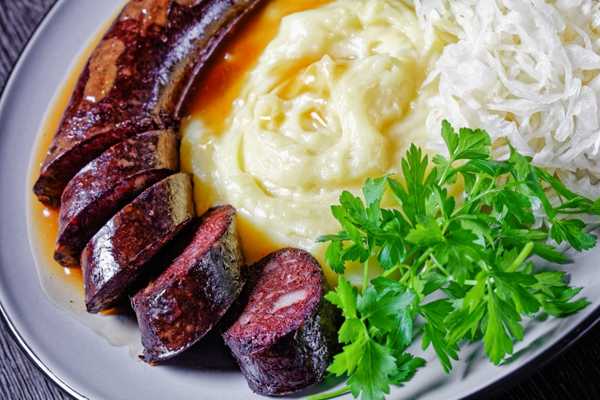
Blutwurst, also known as blood sausage, is a traditional German sausage made from blood, fat, and a variety of spices. It has a dark colour and a distinct, savoury flavour. The sausage is typically boiled or fried and served with potatoes or sauerkraut.
Blutwurst has a long history in Germany, dating back to medieval times. It was traditionally made using the blood of slaughtered animals, such as pigs and cows, and was often eaten by peasants who couldn't afford meat. Today, Blutwurst is still enjoyed by many Germans as a traditional food.
Blutwurst, also known as blood sausage, is a dark-coloured sausage made from blood, fat, and a variety of spices. It has a distinct, savoury flavour and a soft, crumbly texture. Blutwurst is typically boiled or fried and served with potatoes or sauerkraut.
More about the blutwurst German sausage here.
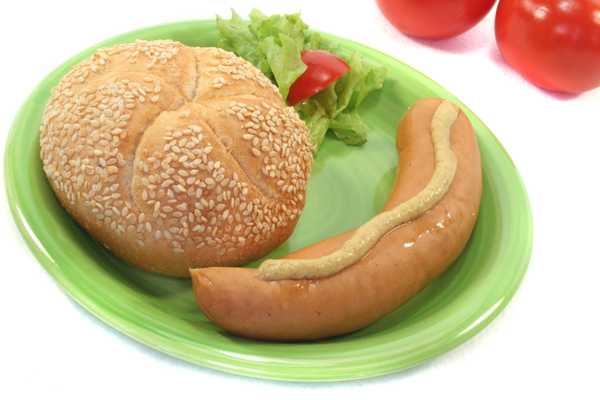
Bockwurst is a German sausage made from veal and pork. It has a mild flavour and a delicate texture. The sausage is often boiled and served with mustard and bread or as a hot dog with various toppings.
Bockwurst was originally created in the city of Frankfurt in the late 1800s. It was intended to be a lighter and milder alternative to the traditional pork sausages of the time. Today, it's a popular snack food in Germany and is often enjoyed at sporting events and festivals.
Bockwurst is a mild-flavoured sausage made from veal and pork. It has a delicate texture and a juicy, flavourful interior. The sausage is often boiled and served with mustard and bread or as a hot dog with various toppings.
More on the Bockwurst German sausage here.
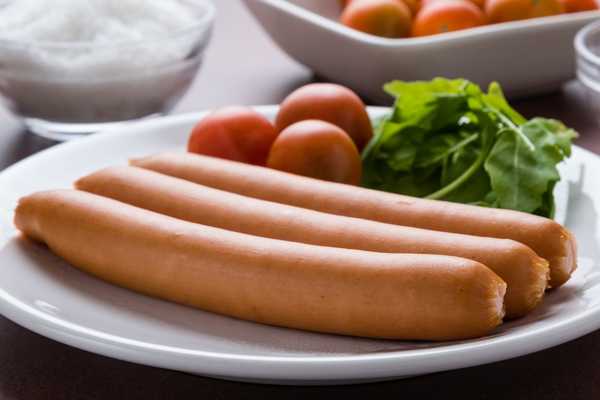
Frankfurter, also known as a hot dog, is a popular German sausage made from pork. It has a smooth texture and a mild, smoky flavour. The sausage is typically boiled or grilled and served with mustard, ketchup, or relish.
The Frankfurter was named after the city of Frankfurt and has been around since the 13th century. It's a staple of American fast food culture and is often associated with baseball games and backyard barbecues.
Frankfurter, also known as a hot dog, is a smooth-textured sausage made from pork. It has a mild, smoky flavour and is typically boiled or grilled. Frankfurters are often served with mustard, ketchup, or relish.
All about the Frankfurter here.
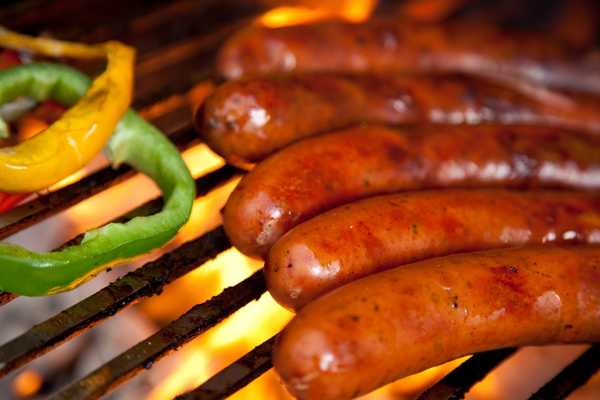
Krakauer is a spicy, smoked sausage made from pork and beef. It has a robust flavour and a coarse texture. Krakauer is often sliced and eaten as a snack or added to a variety of dishes such as stews, soups, and salads.
Krakauer is a Polish sausage that has become popular in Germany as well. It gets its name from the city of Krakow in southern Poland, where it's a beloved traditional food.
Krakauer is a spicy, smoked sausage made from pork and beef. It has a robust flavour and a coarse texture. Krakauer is often sliced and eaten as a snack or added to a variety of dishes such as stews, soups, and salads.
All about the Krakauer here.

Nürnberger Rostbratwurst, also known as Nuremberg sausages, is a small sausage made from pork and seasoned with a variety of spices, including marjoram and caraway. The sausage is typically grilled or roasted and served with sauerkraut or potato salad. It is a popular snack in Germany and is often served in sets of six or twelve.
The Nürnberger Rostbratwurst is named after the city of Nuremberg and is often served in groups of six or twelve. It's a popular food during the Christmas season and can be found in the many Christmas markets throughout Germany.
Nürnberger Rostbratwurst is a small sausage made from pork and seasoned with a variety of spices including marjoram and caraway. It has a pork flavour and is often grilled or fried and served with sauerkraut or potato salad.
All about the Nürnberger Rostbratwurst here.
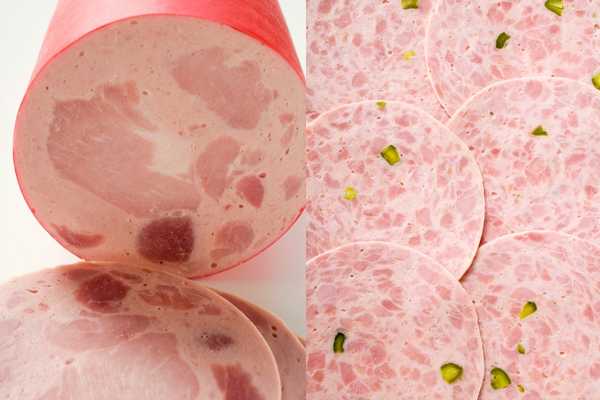
Schinkenwurst is a German sausage made from pork and smoked ham. It has a mild, smoky flavour and a smooth texture. The sausage is often sliced and used as a cold cut in sandwiches or as an ingredient in salads or casseroles.
Schinkenwurst is a cooked sausage that originated in Germany in the early 20th century. It was developed as a way to use up leftover cuts of pork and has since become a popular sausage throughout Germany.
Schinkenwurst is a cooked sausage made from pork and seasoned with a variety of spices. It has a subtle smoky flavour and a soft, delicate texture. Schinkenwurst is typically sliced and eaten cold as a snack or added to sandwiches and salads.
Learn more about the Shinkenwurst here.
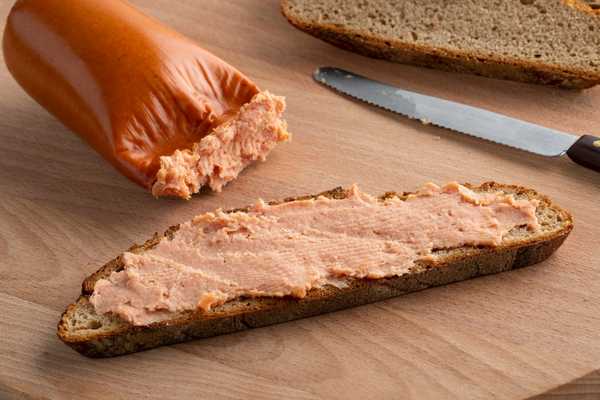
Teewurst, also known as tea sausage, is a spreadable sausage made from pork and bacon. It has a smooth texture and a savoury, smoky flavour. The sausage is typically served on bread or crackers as a snack or appetizer. It is a popular sausage in Germany and is commonly found in delis and supermarkets.
Teewurst is a soft, spreadable sausage that has its origins in northern Germany. The exact history of Teewurst is not clear, but it's believed to have been created in the late 19th or early 20th century.
Teewurst is a versatile sausage that can be enjoyed on its own or as part of a larger meal. It's often compared to liverwurst due to its soft texture and spreadability.
Learn more about the Teewurst here.
We hope these recommendations will enhance your enjoyment of these delicious German sausages!
German sausages are a true culinary treasure, enjoyed by people all over the world for their unique flavours, textures, and history. In this article, we've explored some of the most popular German sausages, from the famous Bratwurst to the lesser-known Teewurst and Schinkenwurst.
We've delved into the flavours of each sausage, giving you a glimpse of the rich and diverse culinary culture of Germany. We've also touched on their origin and history, showcasing the unique stories behind each sausage.
From the smoky Thuringian sausage to the delicate Weisswurst, German sausages offer something for everyone. They can be enjoyed as a snack, added to salads and sandwiches, or served as part of a traditional German breakfast or dinner.
In addition to their delicious taste, German sausages also have the potential to offer health benefits. They are high in protein and can be a good source of essential vitamins and minerals, making them a great addition to a balanced diet.
We hope that this article has given you a deeper appreciation for German sausages and their place in culinary history. Whether you're a long-time fan or a newcomer to German cuisine, there's always something new to discover in the world of German sausages.
Learn here more about German bread and also about potatoes in German cuisine.
